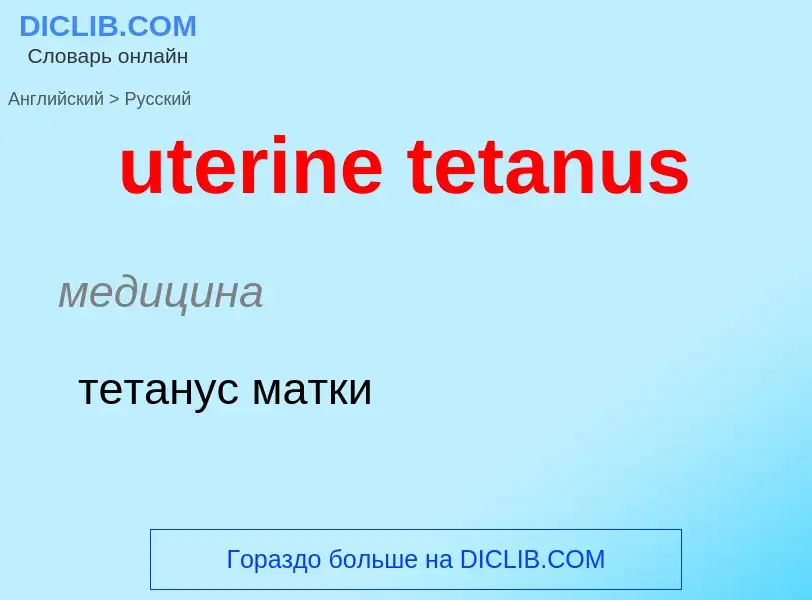Tradução e análise de palavras por inteligência artificial ChatGPT
Nesta página você pode obter uma análise detalhada de uma palavra ou frase, produzida usando a melhor tecnologia de inteligência artificial até o momento:
- como a palavra é usada
- frequência de uso
- é usado com mais frequência na fala oral ou escrita
- opções de tradução de palavras
- exemplos de uso (várias frases com tradução)
- etimologia
uterine tetanus - tradução para russo
медицина
тетанус матки
медицина
столбняк новорождённых
Definição
Wikipédia

Tetanus, also known as lockjaw, is a bacterial infection caused by Clostridium tetani, and is characterized by muscle spasms. In the most common type, the spasms begin in the jaw, and then progress to the rest of the body. Each spasm usually lasts for a few minutes. Spasms occur frequently for three to four weeks. Some spasms may be severe enough to fracture bones. Other symptoms of tetanus may include: fever, sweating, headache, trouble swallowing, high blood pressure, and a fast heart rate. Onset of symptoms is typically 3 to 21 days following infection. Recovery may take months, but about 10% of cases prove to be fatal.
C. tetani is commonly found in soil, saliva, dust, and manure. The bacteria generally enter through a break in the skin, such as a cut or puncture wound caused by a contaminated object. They produce toxins that interfere with normal muscle contractions. Diagnosis is based on the presenting signs and symptoms. The disease does not spread between people.
Tetanus can be prevented by immunization with the tetanus vaccine. In those who have a significant wound and have had fewer than three doses of the vaccine, both vaccination and tetanus immune globulin are recommended. The wound should be cleaned, and any dead tissue should be removed. In those who are infected, tetanus immune globulin, or, if unavailable, intravenous immunoglobulin (IVIG) is used. Muscle relaxants may be used to control spasms. Mechanical ventilation may be required if a person's breathing is affected.
Tetanus occurs in all parts of the world, but is most frequent in hot and wet climates where the soil has a high organic content. In 2015, there were about 209,000 infections and about 59,000 deaths globally. This is down from 356,000 deaths in 1990. In the US, there are about 30 cases per year, almost all of which have not been vaccinated. An early description of the disease was made by Hippocrates in the 5th century BC. The cause of the disease was determined in 1884 by Antonio Carle and Giorgio Rattone at the University of Turin, and a vaccine was developed in 1924.







